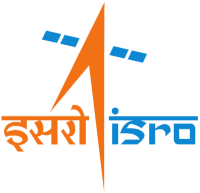IndianMascot
Core Member

ISRO will launch the third of seven series of satellites to put in place India's own navigation system on par with US' Global Positioning System (GPS) from the spaceport of Sriharikota on October 10.
The launch has been scheduled at 1:56 AM on October 10, ISRO said on Friday.
The IRNSS 1C satellite would be launched on the 28th flight of India's PSLV-C26 from the Satish Dhawan Space Centre at Sriharikota, some 100 km from here.
As part of its aspirations to build a regional navigational system equivalent to Global Positioning System of the US, ISRO plans to send seven satellites to put in place the Indian Regional Navigational Satellite System (IRNSS).
The first two satellites in the series, IRNSS 1A and IRNSS 1B were launched from Sriharikota on July 1 2013 and April 4 this year respectively.
ISRO needs to launch at least four of the seven satellites to start operations of the IRNSS, ISRO officials said.
Being developed by India, IRNSS is designed to provide accurate position information service to users in the country as well as the region extending upto 1,500 km from its boundary, which is its primary service area.
ISRO to launch IRNSS 1C on October 10 - IBNLive

